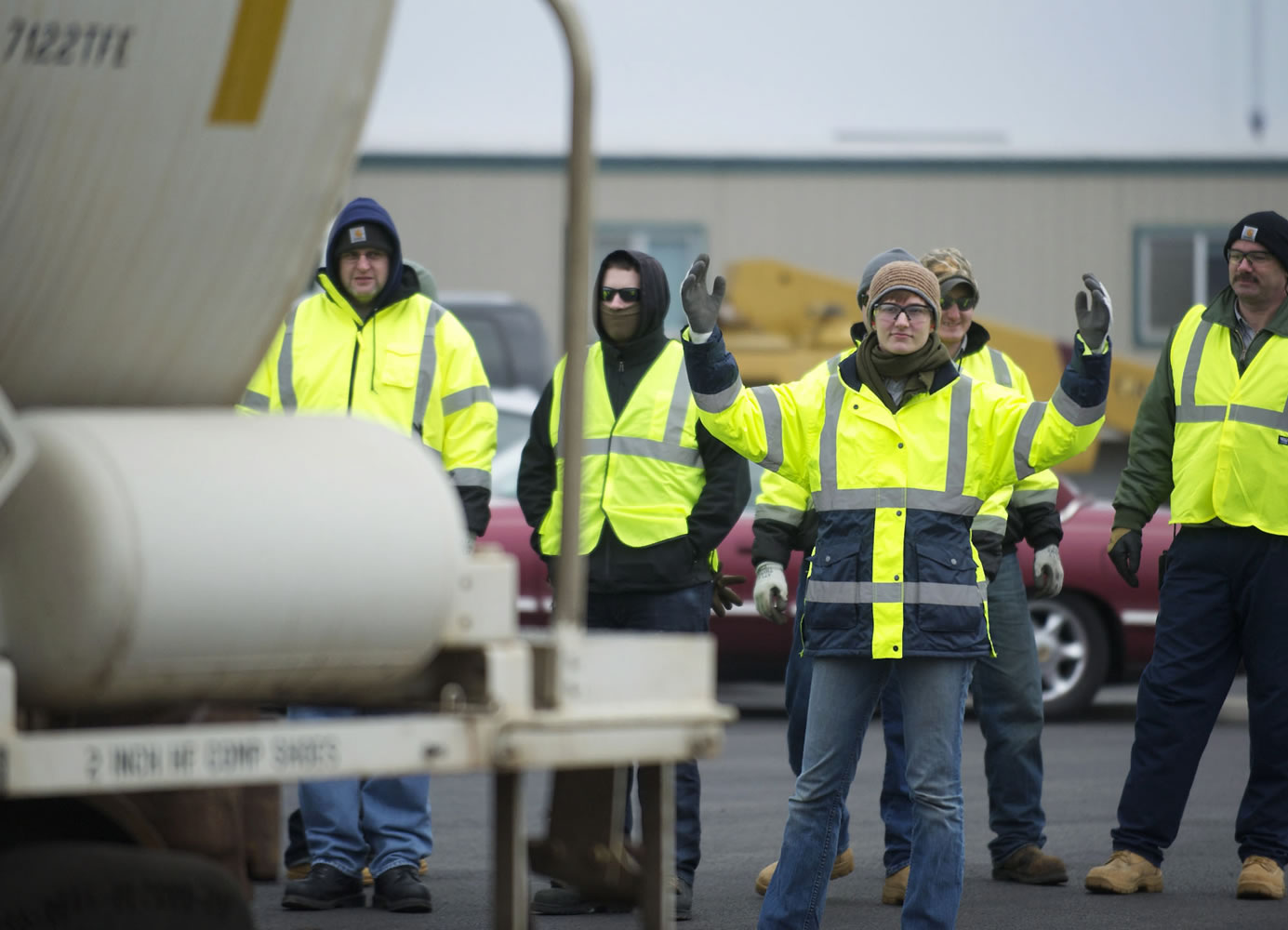Northwest Railroad Institute
o What: Railroad operations training program buys a locomotive
o Program began: July 15, 2013.
o Program length: Six months.
o Classes start: Every two months.
o Tuition: $14,000.
o Where: 200 Grand Blvd.
o Information: 360-695-2500 or 800-868-1816.
o On the Web:
http://nwrailroadinstitute.com/
Despite temperatures in the 20s and falling snow, Ana Green’s eyes are fixed on the locomotive slowly moving down the track toward her. Green, 21, motions with her hands to signal the engineer driving the train.
The engine slows, and the hopper car it’s pushing stops only an inch from an orange pylon. The other students erupt into cheers.
“She got it! Bang!” one student shouts.
Green, the only female in her class at the Northwest Railroad Institute, turns toward her classmates and smiles.
The private trade school recently purchased the 1951 locomotive, an SW-8 with an 800 horsepower engine. One of the few still in use, it’s the type of engine that pushes and pulls cars in the rail yard, says Arch Miller, who founded the school.




